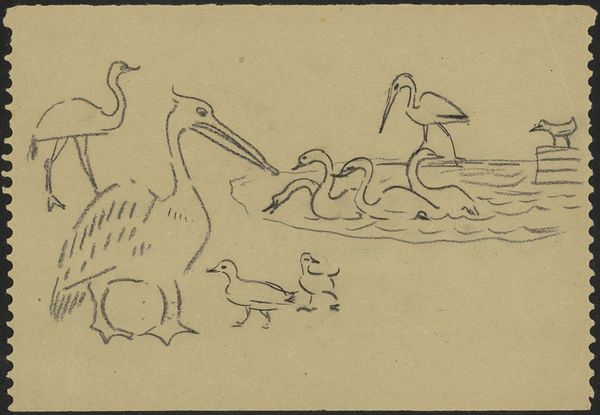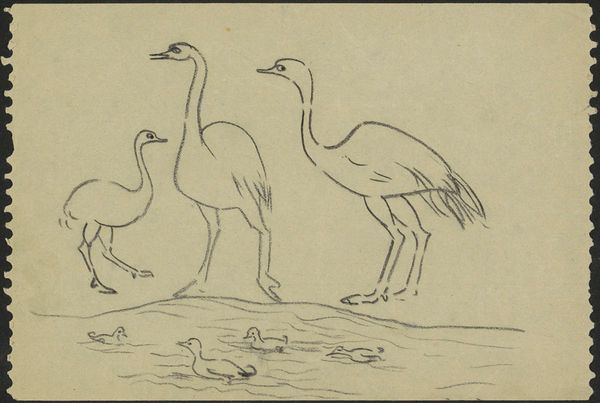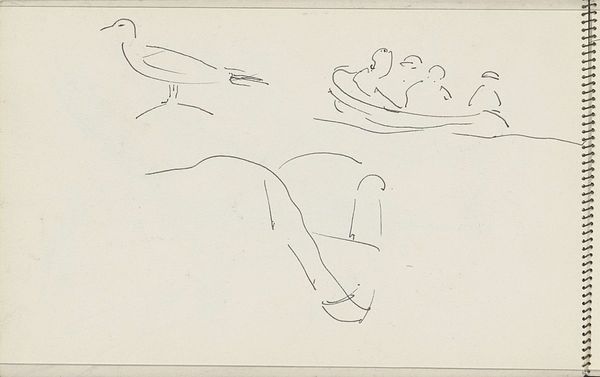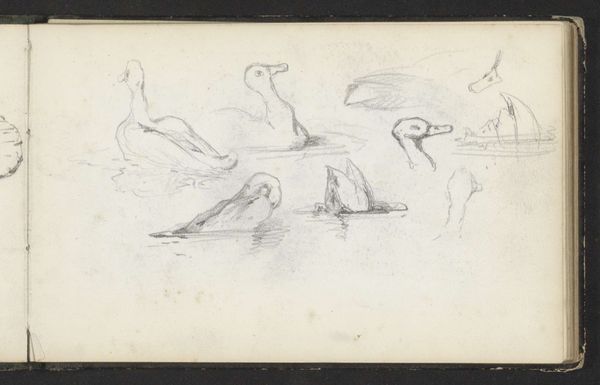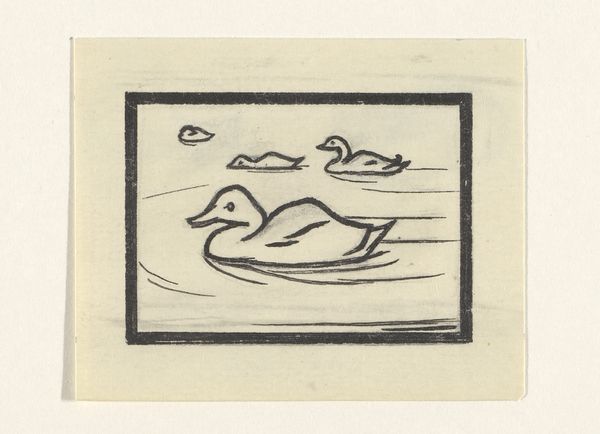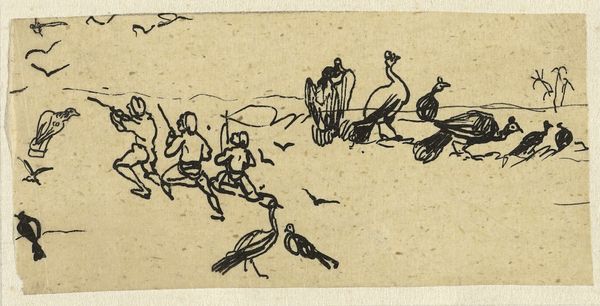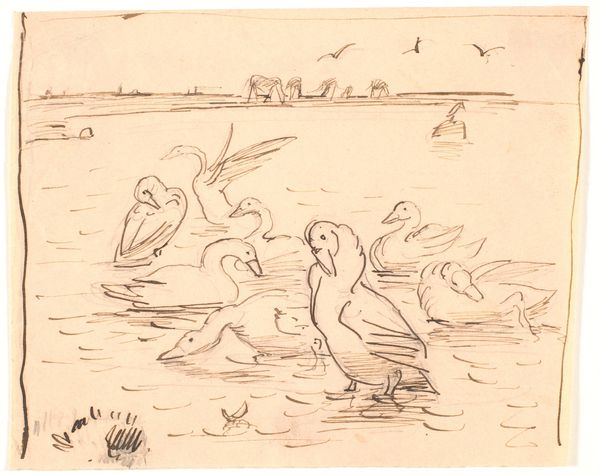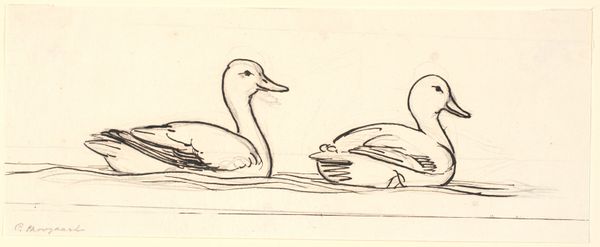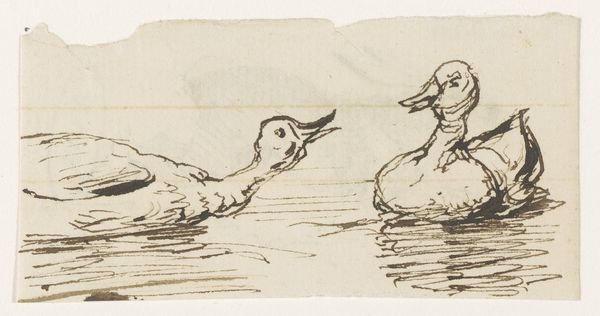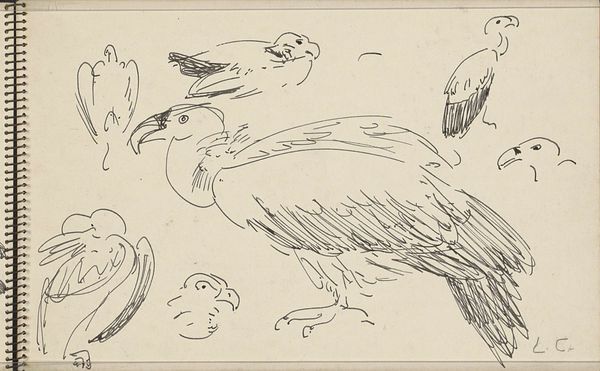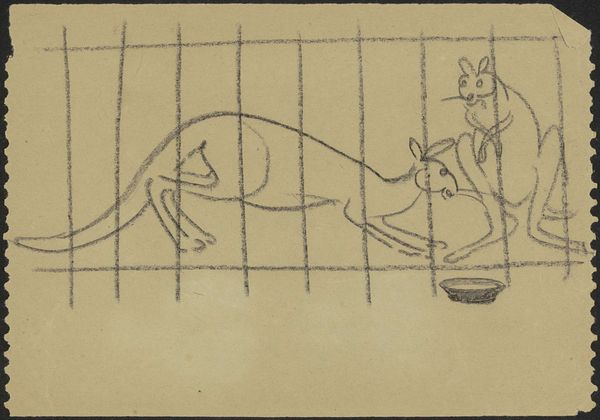
Dimensions: height 181 mm, width 123 mm
Copyright: Rijks Museum: Open Domain
Editor: Here we have Gerrit Willem Dijsselhof's "Swans and Ducks in the Water," dating from around 1904 to 1906, a pencil and pen sketch on paper. I find its loose lines quite charming. What do you see in this piece? Curator: It strikes me as more than just a charming sketch. Consider the time it was made. Early 20th century. The natural world was already under immense pressure from industrialization. Dijsselhof's choice to depict waterfowl could be read as a quiet act of preservation, a visual elegy for disappearing ecosystems. Editor: An elegy? I hadn't considered that. I saw it more as a simple nature study. Curator: But simplicity can be deceptive. Look at the composition: The swans are prominent, almost idealized, while the ducks are more hastily rendered, further in the distance. Could this reflect a social hierarchy mirrored in the natural world? The privileged, graceful swan versus the more common, everyday duck? Think about the societal anxieties around class at the time. Editor: So, you're suggesting he's making a comment about class through birds? That's pretty deep. I was just appreciating the linework! Curator: Art often works on multiple levels. Dijsselhof was part of a generation grappling with rapid social and environmental change. His art becomes a form of quiet resistance. He presents this image of nature that perhaps he fears is under threat. The act of sketching it is him marking its presence and speaking of its beauty, which holds political value in the face of that erasure. What do you think of that suggestion? Editor: It's a powerful reading! I'll definitely look at nature studies differently from now on. Curator: Exactly! And it all begins with noticing.
Comments
No comments
Be the first to comment and join the conversation on the ultimate creative platform.
